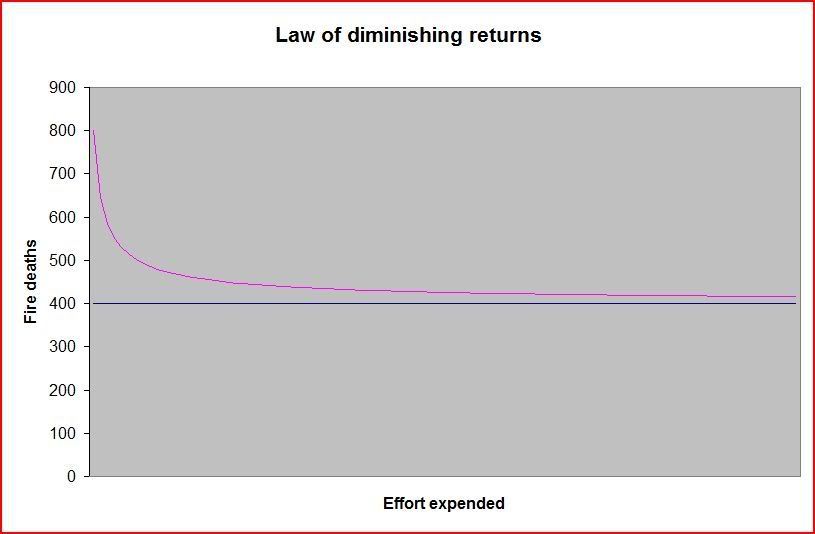Just to pick up on some of the points above:
First, part of the reasoning behind the new ADB dispensation of the need for self closing devices on certain doors in dwelling houses was the belief that the public would be receiving education on how better to improve the fire safety in their homes. One thing they would be educated to do would be to shut doors at night (hence obviating the need for self closers).
This is just one example of where the authors had foresight and faith in anticipating a holistic approach to public fire safety. FRSs should not let them down in this respect.
Next, on a completely different tack, here's a graph I bandy about:

The graph represents the relationship between effort expended on CFS initiatives and the number of fire deaths and it shows a typical pattern of decrease, asymptotically approaching a certain value, a certain number of fire deaths per year. Sadly this number is not zero, it is somewhere around 400.
This represents a sector of society that it is impossible to reach, impossible to change, no matter how much effort is expended. There's no getting away from it, this sector exists.
I wonder where we sit on the graph at the moment. Are we still in the cost effective zone or are we beyond that and spending money that, frankly, could be better spent elsewhere?
Wherever we are on the graph, I think it is important that fire data is properly analysed so that we can know where we are. And, in turn, we can devise appropriate future strategies.
Stu



